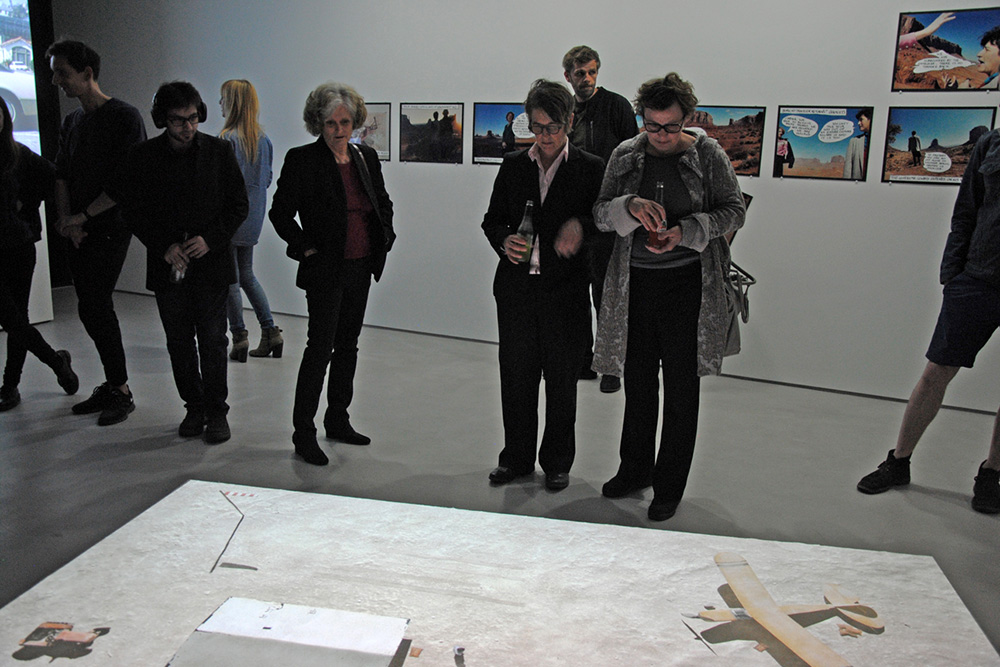
Mackey Garage Top, MAK Center, Los Angeles, 2014
The Eden’s Edge Project
Mackey Garage Top, MAK Center for Art and Architecture, Los Angeles, 2014
Our intention for this exhibition was to show three artistic positions of landscape interpretation that feature narrative strategies. We were pleased that both Kaucyila Brooke and David Lamelas contributed to it because their work over decades have been showing the potential of this approach to uncover hierarchies of narratives acting on and enacted in space. Work in this field is about undoing mythologies, hegemonic language and question dominant notions of power as much as it is about exploring and revealing the compositional narrative topography basic to our experience of space.
Our goal therefore was to show how narratives are used as artistic media of spatial appropriation, investigation and interpretation.
In this show we were particularly concerned with vernacular environments where everyday stories and mythologies are enacted. This exhibition featured one of Hollywood’s most iconic landscapes, the Californian desert. Tightly connected to movies and myths relaying the American meta-narratives of the Wild West, The New Frontier, and The Land of Opportunity, this particular landscape is exemplary of how places can trans-locally frame identities.
The Eden's Edge Project presented nine short films based on interviews with desert residents, creating a portrait of the area from the life stories of its people. The films were projected onto a sand screen on the floor of the gallery.
David Lamelas and Kaucyila Brooke extended this discourse as they destabilize and reveal politics of identity in their narratives of the American desert. What literary philosopher Mikhail Bakhtin pointed out as the interpretational power of genre is impressively demonstrated in David Lamelas’s film, The Desert People (1974), about five people on a road trip in which each interviews members of the Papago tribe, discovering very different ”truths.” Road movie scenes interact with a straight-to- camera documentary in a semi-fictional storyline reflective of the filmmaker’s personal situation. Lamelas produced the film as part of his process of appropriation when he moved from London to Los Angeles.
In This Land is Your Land, Kaucyila Brooke created a sequence of multiple color photomontage panels set against the backdrop of Monument Valley, John Ford’s favorite filming location. There, she staged female characters discussing their relationship to the narrative of the Western landscape. In this piece, the narrative was revealed as tool to reconfigure and reflect on the gendered power relations coded into the Western genre. The work was originally produced in 1987 while Brooke was living in Tucson, Arizona and it shows her early interest in seeking out traces of women’s desire long absent in the Western narrative. This Land is Your Land was restored specifically for The Eden’s Edge Project.



